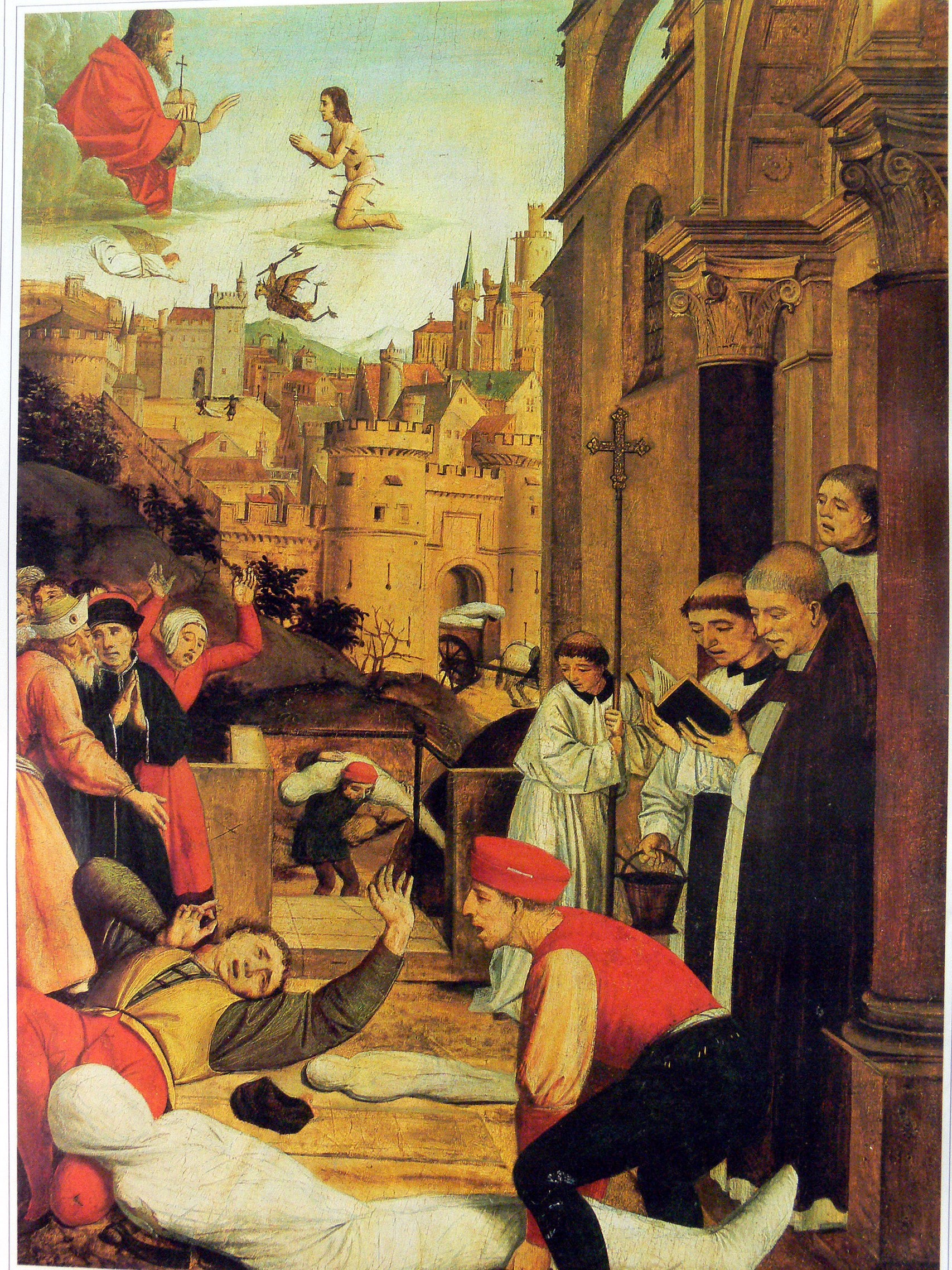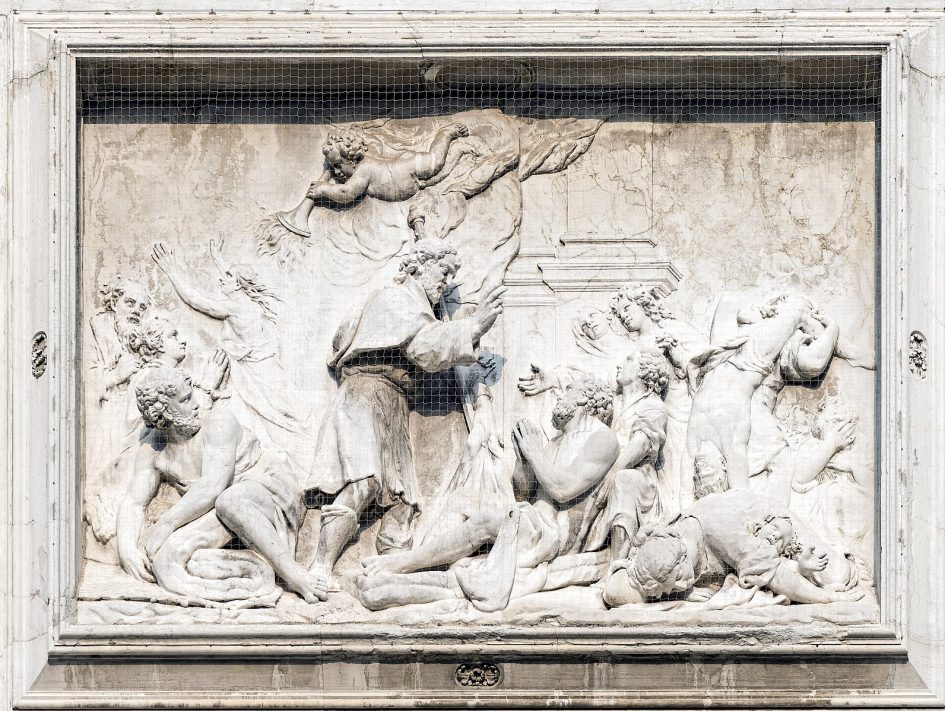Plagues and pests have become increasingly foreign to the modern world, though in our current conditions, I suspect that the general reactions of fear, terror, madness, loss, and loneliness reflect comparable receptions in previous eras. While famine and disease do regularly infect scattered localities, typically with the harshest impact to already impoverished regions, such a global reach is perhaps novel — particularly in its psychological impact when data on risk and death are so readily available.
The annals of history, however, paint a striking picture of the regularity of such epidemics, particularly as people moved into cities, leaving behind the natural social distancing of agrarian life. Around the time of Jesus and Paul, the city of Rome (likely the most populous city on the planet) probably had little more than 500.000 within its walls.[1] But the density was high: 75.000 inhabitants per square kilometer — this is over double that of nearly all modern cities.[2]
Further, sanitation left much to be desired. The narrow streets often doubled as the sewer, so disease was common.[3] And, were a raging pandemic to knock at the city gates, the results were devastating. Many of these plagues were observed to be contagious, so those that could flee the city did – including medical professionals like the renowned physician Galen — and those left therein had to endure the resulting terror.
At the first onset of the disease, they pushed the sufferers away and fled from their dearest, throwing them into the roads before they were dead and treated unburied corpses as dirt, hoping thereby to avert the spread and contagion of the fatal disease; but do what they might, they found it difficult to escape.[4]
Such were the writings of Dionysius, bishop of Alexandria, who had watched a third century plague rage through his city. Another well-known plague occurred a century earlier in 165, under the reign of the Emperor Marcus Aurelius, who himself succumbed to the disease. These are both often thought to be smallpox, and the deaths were in the millions. In the sixth century, the so-called Plague of Justinian (bubonic plague) killed as many as 100 million people, reducing the number in Europe by half.[5]
The picture is not pleasant: dear family members discarded into the streets as though they were mere human waste. We cannot imagine these family members as cold-hearted — they were much the same as you or I — the exiling of a sick family member was heart-breaking and traumatic, but the risk to the family was to great, that all in their crowded dwelling would succumb. Here, at least, there was hope for some of them. And to those cast off, to those lying ill among other dying, the sense of abandonment and hopelessness is unimaginable.

Josse Lieferinx. St Sebastian pleading for the life of a gravedigger afflicted with plague during the 7th-century Plague of Justinian. Public domain.
All one could do was hope and to pray — or could one? In Athens around 430 BC, the Greek historian Thucydides (one of the ‘fathers of history’) describes a plague (perhaps typhus fever?) which devastated the Athenian people, but he bemoaned the hopelessness of the situation:
Useless were prayers made in the temples, consultation of oracles, and the like. In the end, people were so overcome by their sufferings that they paid no further attention to such things. They died with no one to look after them. There were many homes in which all the inhabitants perished through lack of attention. For the catastrophe was so overwhelming that people, not knowing what would happen next, became indifferent to every rule of religion and law. No fear of god or law had a restraining influence.
It was into this situation that a tiny, insignificant, and often misunderstood minority found themselves. To these predominantly urban, upstart Christians, this was their experience, and they had to determine how to practice the teachings of their Galilean savior in this terrifying environment. How to love their neighbor and care for the sick, poor, and needy, when they might risk life and limb? Many Christians braved, suffered, and even died taking care of one another, choosing to embody love and mercy rather than embracing fear.
Dionysius of Alexandria whom we met earlier, recalls the heroics of many Christians:
Most of our community showed unbounded love and loyalty, never sparing themselves and thinking only of one another. Heedless of danger, they took charge of the sick, attending to their every need and ministering to them in Christ, and with them departed this life serenely happy. Many, in nursing and curing others, transferred their death to themselves and died. The best of our community lost their lives in this manner, a number of presbyters, deacons, and laymen…[7]
While many lost their lives in this endeavor, many were also saved. Some estimates suggest that simple care and providing of basic needs could have reduced mortality by over half. As a non-Christian during this period, how attractive must this community have appeared! Reduced mortality and without members lying, dying in the street.[8]
Today, we fortunately have physicians who do not flee to the hills at the first sign of contagion as in those early days. This is helped significantly by our greater knowledge of how viruses and bacteria work (therefore, better hygiene), and the protection we can provide (e.g., facemasks for the sick or for a physician). In spite of these advancements, fear, terror, and selfishness continue to drive behavior — reminiscent of Thucydides description of the Athenian plague. There are many, however, who, like the Christians of old (and others, there most certainly were), and they must be commended.
Christians, too, must do their part. Generosity must triumph over fear, though fortunately most of us do not have to risk life and limb to fulfill our obligation to love and care for those in need. For some, the responsibility is to serve in person, risking all in the service of god. For others, the risk will be less, but the responsibility is just as great: monetary donations to those providing relief, providing encouragement and stability in crisis, and pursuing generosity (e.g., sharing supplies with those in need, from the significant masks and sanitizing equipment, to the somewhat more silly demand for toilet paper and paper towels). Remembering that the Christian responsibility is to bring about victory over the powers of fear and death, and remembering that god is always in control even when we feel powerless.
- In this discussion, I am particularly indebted to Rodney Stark’s work. See, in particular, ch. 6 ‘Misery and Mercy’ in The Triumph of Christianity and ch 4 ‘Epidemics, Networks, and Conversions’ in ‘The Rise of Christianity’.
- https://en.wikipedia.org/wiki/List_of_cities_proper_by_population_density, accessed March 2020; Rome population density estimate taken from Stark of 302 inhabitants/acre.
- For discussions of regular life in ancient Rome, see Carcopino’s Daily Life in Ancient Rome.
- Dionysius of Alexandria, cited in Eusebius, History of the Church 7.22
- A helpful list of plagues and references: https://en.wikipedia.org/wiki/List_of_epidemics.
- Thucydides. Excerpts from Peloponnesian War, Book 2.
- Dionysius of Alexandria, ibid.
- This is not to say that none besides Christians provided such care, nor to imply that all Christians provided this sort of help.
